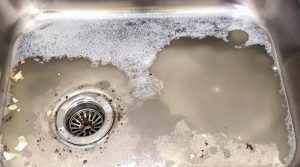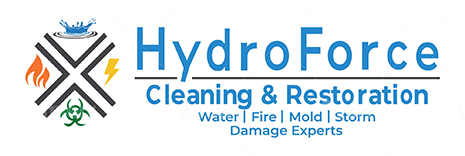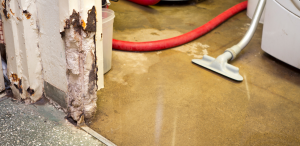Q: What is water damage restoration?
A: Water damage restoration is the process of repairing and restoring a property that has been affected by water damage. This process typically involves several steps, including removing standing water, drying out the affected area, cleaning and disinfecting surfaces, and repairing or replacing any damaged materials. The goal of water damage restoration is to restore the property back to its pre-loss condition as quickly and efficiently as possible, while also minimizing the risk of further damage or health hazards. Professional water damage restoration companies use specialized equipment and techniques to ensure that the restoration process is completed safely and effectively.
Q: What causes water damage?
A: Water damage can be caused by a variety of factors, including:
- Natural disasters such as floods, hurricanes, and heavy rainstorms.
- Plumbing and appliance malfunctions such as burst pipes, leaking water heaters, and overflowing toilets or sinks.
- Structural problems such as roof leaks or foundation cracks.
- Sewage backups or overflows.
- Human error, such as leaving a faucet running or forgetting to turn off an appliance.
- Moisture buildup due to inadequate ventilation or humidity control.
Water damage can cause significant damage to a property and its contents if not addressed promptly and properly. It is important to identify the cause of the water damage and take immediate action to prevent further damage and begin the restoration process.
Q: What should I do if my house is flooded?
A: If your house is flooded, it is important to take immediate action to minimize the damage and ensure your safety. Here are the steps you should take:
- Ensure your safety: If there is standing water in your home, turn off the power and gas supply before entering the flooded area. Wear protective gear such as rubber boots and gloves.
- Call a professional water damage restoration company: It is important to contact a professional water damage restoration company as soon as possible. They will have the expertise and equipment to quickly assess the damage and begin the restoration process.
- Remove excess water: If it is safe to do so, use a wet/dry vacuum or pump to remove standing water from the affected area. Be sure to dispose of the water properly.
- Dry out the affected area: Use fans, dehumidifiers, and open windows to help dry out the affected area. Remove any wet materials, such as carpets and furniture, to prevent further damage and mold growth.
- Document the damage: Take photos or videos of the damage for insurance purposes.
- Contact your insurance company: Contact your insurance company to report the damage and begin the claims process.
Remember, it is important to act quickly when dealing with water damage to prevent further damage and ensure a safe and effective restoration process.
Q: How long does water damage restoration take?
A: In general, the water damage restoration process can take anywhere from a few days to several weeks to complete.
For example, a small water leak that has only affected a small area may only take a few days to repair and restore. On the other hand, a large flood that has affected multiple rooms and levels of a home or building may take several weeks to fully restore.
Factors that can affect the duration of the restoration process include the type and amount of damage, the availability of equipment and resources, and the complexity of the restoration work required. It is important to work with a professional water damage restoration company to ensure that the restoration process is completed efficiently and effectively, and to minimize the risk of further damage or health hazards.
At Hydroforce Cleaning and Restoration, our team is available round the clock. In addition, if you fill out a form, we will respond to you within five minutes.
Q: What is sewage backup cleanup?
A: Sewage backup cleanup is the process of removing and cleaning up sewage that has backed up into a property. Sewage backup can occur due to a variety of reasons, such as clogged or damaged sewer lines, tree root invasion, or heavy rainstorms that overwhelm the sewer system.
Sewage backup can be hazardous to health, as it contains harmful bacteria, viruses, and other contaminants. Therefore, it is essential to handle sewage backup cleanup with care and hire a professional restoration company to do the job.
The sewage backup cleanup process typically involves several steps, including:
- Removing standing water and sewage from the affected area.
- Disinfecting and decontaminating surfaces and materials that have come into contact with the sewage.
- Removing and disposing of any contaminated materials, such as carpets or furniture, that cannot be effectively cleaned.
- Drying out the affected area to prevent further damage and mold growth.
- Restoring the property back to its pre-loss condition.
Sewage backup cleanup should be taken seriously and handled by professionals to ensure that the job is done safely and effectively.
Q: Is sewage cleanup dangerous?
A: Sewage backup can contain a variety of harmful pathogens, including E. coli, salmonella, and hepatitis A, among others.
In addition, sewage backup can cause structural damage to a property, as well as create an unpleasant odor and attract pests. Therefore, it is essential to handle sewage cleanup with care and hire a professional restoration company to do the job.
Professional restoration companies like Hydroforce Cleaning and Restoratio, have the equipment, training, and expertise to safely and effectively handle sewage cleanup, while minimizing the risk of exposure to harmful pathogens. They also have access to specialized disinfectants and equipment to properly clean and decontaminate the affected area, as well as dispose of any hazardous materials.
It is important to take sewage cleanup seriously and hire a professional restoration company to ensure that the job is done safely and effectively.
Q: Can water damage lead to mold growth?
A: Mold can start to grow within 24 to 48 hours of exposure to moisture.
When water damage occurs, the excess moisture can create the ideal environment for mold to grow, especially in areas with poor ventilation or where water has pooled. Mold can grow on a variety of surfaces, including drywall, wood, carpeting, and insulation, among others.
Mold growth can cause a variety of health problems, especially for those with allergies or respiratory issues. Symptoms of mold exposure may include coughing, wheezing, sneezing, itchy eyes, and skin irritation, among others.
To prevent mold growth after water damage, it is important to act quickly and hire a professional restoration company to assess the damage and begin the restoration process. Professional restoration companies have the equipment and expertise to properly dry out the affected area, remove any mold growth, and disinfect the area to prevent further growth.
It is important to take water damage seriously and address it promptly to minimize the risk of mold growth and other health hazards.
Q: Will my insurance cover water damage restoration?
A: Many homeowners insurance policies cover water damage caused by sudden and accidental events, such as burst pipes or overflowing appliances.
However, insurance policies typically do not cover water damage caused by neglect or lack of maintenance, such as a leaky roof that was not repaired in a timely manner.
To determine whether your insurance will cover water damage restoration, it is important to review your policy and contact your insurance provider as soon as possible after the damage occurs. Your insurance provider can advise you on the specific coverage and claims process, and may send an adjuster to assess the damage and determine the amount of coverage.
It is also important to document the damage with photographs and keep records of any repairs or restoration work done. This information can be useful when filing a claim with your insurance provider.
Ultimately, it is important to act quickly and hire a professional water damage restoration company to assess the damage and begin the restoration process, regardless of whether or not your insurance covers the cost. Water damage can cause significant damage to a property and can lead to mold growth and other health hazards if not addressed promptly and effectively.








